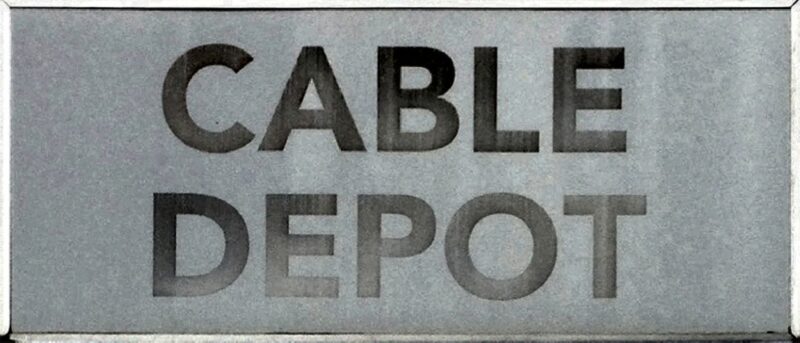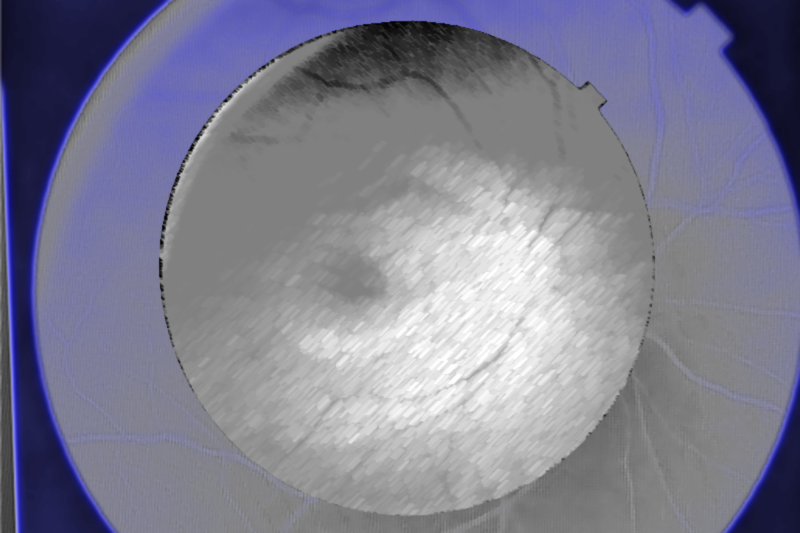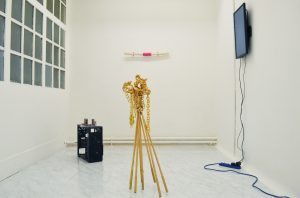In Klara and The Sun, author Kazuo Ishiguro writes from the viewpoint of Klara, an android Artificial Friend who has a nascent intelligence and a childlike capacity for self-awareness. In the story, which is set in an otherwise immediately recognisable near future, Artificial Friends are bought, used and discarded as companions for young people, much as you might buy a pet. Ishiguro convincingly describes the cool interior mindscape of Klara as she takes in her environment through an array of windows, piecing together events and deciding how to act using a combination of programmed predispositions, logic and inference. Like a child, Klara lacks a rich store of experience on which to draw, and so builds up a best-guess picture of the world and how to behave in it from her fragmented and partial encounters.
Like Klara, we are now in our own digital infancy. We have thrown away, or cease to trust, or are being led away from, the slow, experiential, analogue way of being in the world that is grounded in shared cultural experience, the tangible immediacy of our five senses and the local interconnectedness of community and environment. Instead, we now process a seemingly limitless feed of fragmented and partial information. Like Klara, we are learning how to construct a new and altogether different view of the world. Unlike Klara, we are left with the digital anxiety of permanent connection.
Digital connectivity goes back a long way. The name Cable Depot is a direct reminder of the submarine telegraph cables that began to encircle the globe in the Victorian era. New technology has always reshaped our behaviour and so far we have always managed to adapt. So perhaps digital anxiety is no more than the teething troubles of new technology.
Or perhaps this time things will be different. Perhaps there is a difference of scale – too much information. Perhaps there is a difference of speed – no time to think. Perhaps there is a difference of kind – the bots are coming. Perhaps all three. Or perhaps none. Futurology is a risky business. In 1941 V.E. Yardley predicted plastic teeth and plastic coffins but his optimistic vision of Plastic Man in a Plastic Age notably omitted plastic pollution. And I’m still waiting for flying cars.
Klara and The Sun provides a relatively benign view of the future that awaits us. One hundred years ago E. M. Forster wrote The Machine Stops and imagined an alternative future of passivity, dependence and disconnection. We cannot know if we are heading for utopia or dystopia, but either way, we cannot go back. We are not wired up that way. Watching technology evolve at its current rate is, excitingly, like watching a new and unknown culture form in a petri dish.

In this context, some artists treat each innovation as the latest plaything – look what can be done now! Some retreat into analogue, either as a rejection of the digital or as a critique of it. And others, such as Bob Bicknell-Knight in his latest exhibition Insert Coin at Cable Depot, hold it in the palm of their hand like a crystal and turn it to the light.
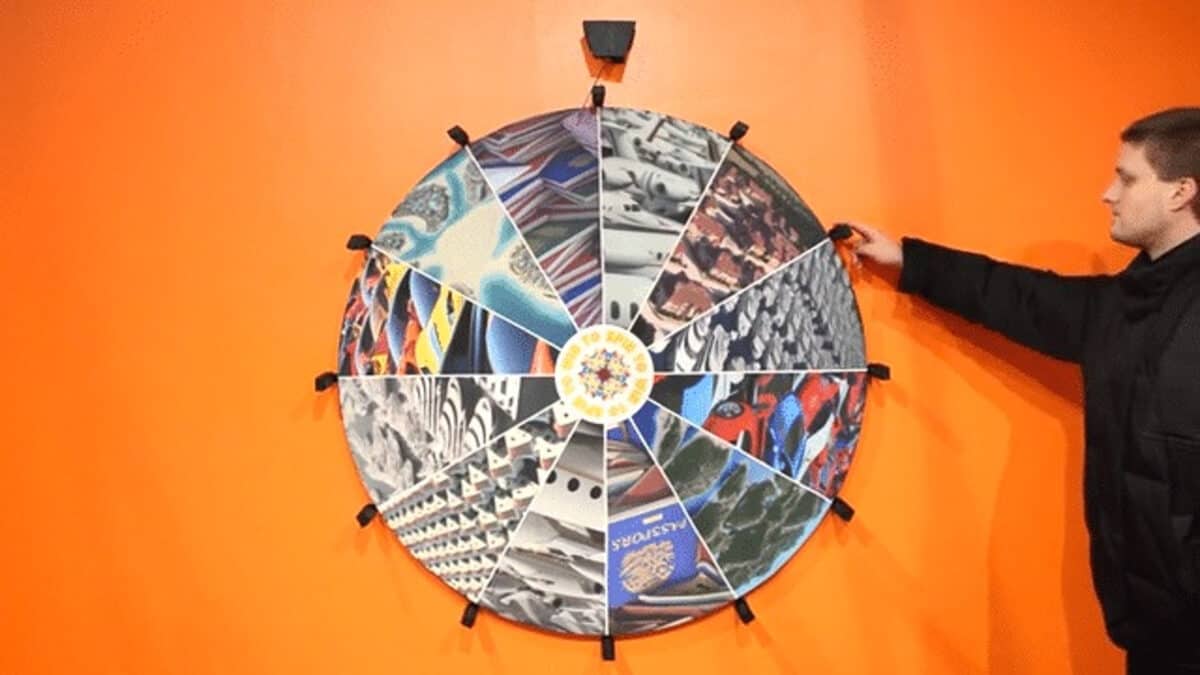
The major premise of Insert Coin is to critique the use of loot boxes in online gaming. A loot box is a treasure chest that can be opened to reveal additional features or provide additional capability in the game being played. Loot boxes are being increasingly used as a gambling device in which the player pays to open the box and receives a reward of varying value. We have moved on a long way from the transactional transparency in evidence when 20p got you three lives on Space Invaders. The gamer is now being exploited to maximise spend. To paraphrase Jenny Holzer, the gamification of games comes as no surprise.
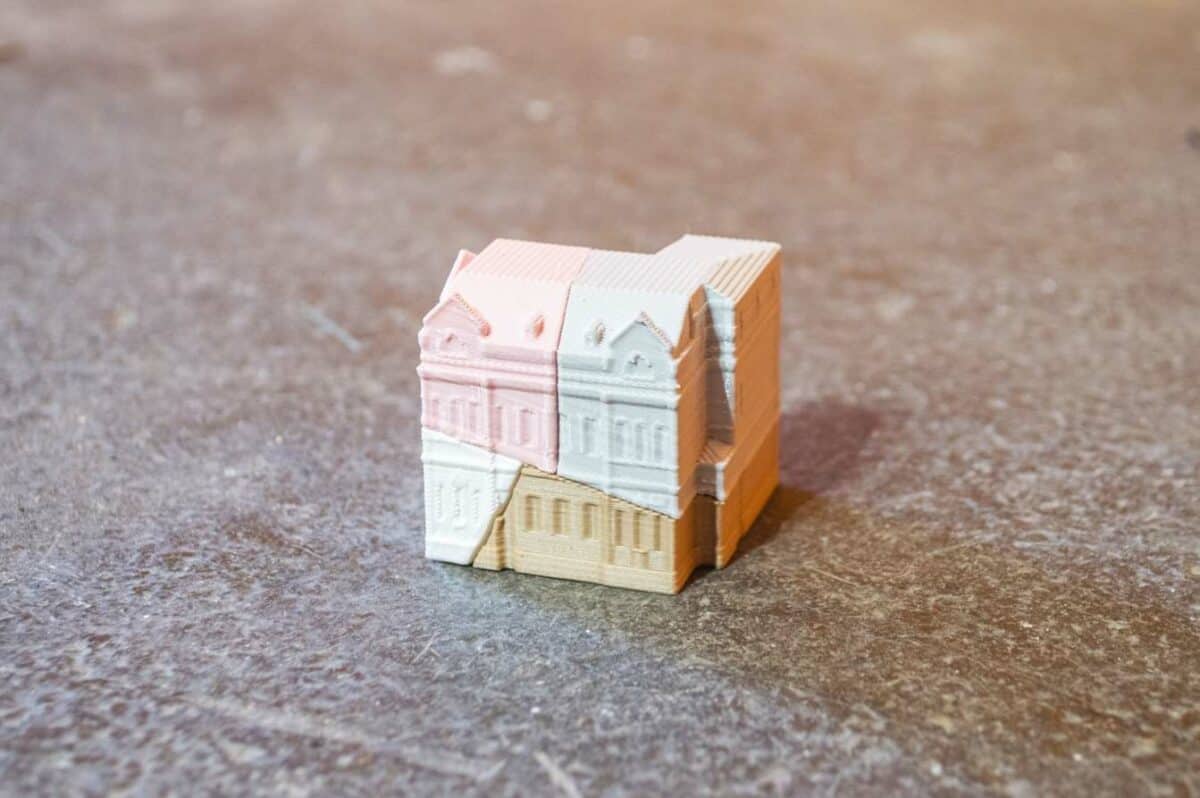
“House” 2023 3D printed PLA plastic, glue
For Insert Coin Bicknell Knight has extracted key elements of the loot box subculture from the online gaming world and transposed them into analogous physical counterparts within the confines of Cable Depot. The intimacy of the gallery and the five coats of bright orangeness on the walls (yes! they were indeed orange, much to my delight) created a satisfyingly intense backdrop of artificial claustrophobia.
On the far wall hangs a large painted spin-the-wheel device for visitors to twirl, fairground fashion, and win a prize. This kinetic, performative piece nicely adds to the dynamic of the space, creating movement, sound and much laughter. Its retro throwback feel and guarantee of a prize (I was extremely satisfied with my 3d-printed miniature car) brings an element of gambling into the room, but it felt relatively benign and contrasts well with the sharp cynicism and slickly knowing CGI video that features Wally the animated loot box who guides us through the history of the gaming genre and the rise of its gamification.
Also around the walls is a display of the spin-the-wheel prizes and a painting of 25 different loot boxes, each one a fine piece of work. But dominating the space and the centrepiece of the show is a giant, modular, 3d-printed tick, suspended upside down from the ceiling like an alien that has crash landed in a remote corner of South London, as if snagged by its own bright orange parachute straps and with the orange flare of its descent colouring the walls. The tick is a reference to the Loot Ticks that inhabit the gaming world. This one has gatecrashed the party like an awkward adolescent. The choice by the gaming company Apex Legends of an unpleasant parasite as their avatar for in-game purchases must surely have been deliberate or else is deeply ironic.
This is a meticulously put together show with great attention to detail, right down to the schlock casino-style patterning on the floor. The result is intense and intensely enjoyable. Bob Bicknell Knight has momentarily frozen the torrent of gaming gigabytes, turning an endless stream of data into a human-scale, physical reality that we can walk in, through and around. Insert Coin allows us to pause and reflect, on our own terms.
At the time of writing, Klara remains a fiction. The only Artificial Friends we currently have are those we create for each other on Instagram, FaceBook and TikTok. We are still trapped in our physical bodies and technology is not yet routinely sewn into our skin. Chatting to Bob Bicknell-Knight over Zoom and then subsequently seeing the show in the flesh reminds me that, for now at least, the immediacy of the real world experience still wins the day. Text by Robert Good
Bob Bicknell-Knight, Insert Coin, Open Evening: Friday 17 March 6-10pm, then exhibition continues to 19th April 2023, Cable Depot Project, CCTV Live: 18th March – 19th April
